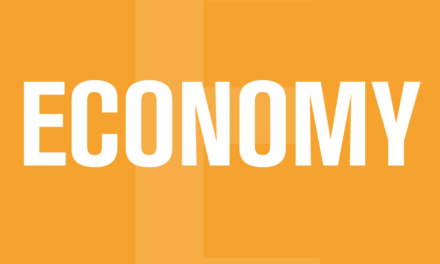Prince Harry wasn’t the only one busy flogging his book through media interviews this past week. Bill Morneau, Justin Trudeau’s erstwhile Finance Minister, was dispensing inside dope and hard-earned wisdom in advance of the release next week of Where to From Here, his reflections on a political life that was interrupted nearly two years ago with his departure from the federal cabinet.
In an interview with the Globe and Mail that would likely have dismayed any hard-pressed front line health worker who had the time to read it, Morneau declared that “we need to recognize that steadily rising health care costs are unsustainable.”
The justification for that front page declaration – whether it came from Morneau or the interviewer is unclear – was the claim that the health care system now consumes 13 per cent of Canada’s gross domestic product, “second only to the U.S. among Organization for Economic Cooperation and Development (OECD) nations.”
I’m unable to say for sure that the statement is inaccurate. Although highly unlikely, it may now be true, but it certainly was not in 2021, the most recent year reported on the OECD website (at https://data.oecd.org/healthres/health-spending.htm). In 2021, Canadians spent only 11.7 per cent of GDP on health, well back of the Americans at 17.8 per cent and the citizens of five other countries – Germany 12.8, France 12.4, Austria 12.2, the United Kingdom 11.9 and Switzerland 11.8 per cent.
Those percentages represent total spending – public and private. Canadians spend disproportionately more out-of-pocket for health care, a factor that moves this country even further down the ranks for tax-supported health spending. According to the OECD, Canadian government spending on health care amounted to 8.7 per cent of GDP in 2021, lower than every country but Switzerland on the list above, but also trailing Sweden, the Netherlands, Japan, Denmark and Belgium. So that makes 11 countries that spent a larger share of their GDP on public health care in 2021 than Canada did.
Spending Unsustainable?
Sustainable is one of those plastic words (i.e malleable but empty of actual meaning), making it hard to refute Morneau’s claim that “steadily rising health care costs are unsustainable.” As discussed in Part One, the Parliamentary Budget Office does have a definition of sustainability which it applies to federal finances. The PBO has concluded that the federal government could increase spending or reduce taxes by some $45 billion (almost 10 per cent more than current spending) without continuously increasing the debt. If all of that $45 billion went to health, it would mean a 20 per cent increase in health spending could be achieved while keeping federal finances sustainable, at least according to the PBO’s definition. So maybe what Morneau means is that in his opinion the costs are unsustainable, especially if he has some other things he’d prefer to spend money on instead, such as corporate tax cuts.
The claim of “steadily rising health care costs” is certainly true. The cost of most things are going up, and health care’s no exception. The question, though, is whether the rate of increase is a problem. An argument that one hears from critics is that health is devouring an increasing share of public spending, crowding out other important priorities. That one doesn’t hold up. Calculations based on Statistics Canada’s Canadian Classification of Functions of Government, show that between 2011 and 2021 the health share of total government spending in Canada ranged from a low of 23.5 per cent in 2019 to a high of 24.8 per cent in 2015. The one exception to the pattern was in 2020, when an explosion in non health spending through programs like CERB and CEWS reduced the health share of total government spending to 20.4 per cent.
So spending on health care – consistently a priority issue for Canadians – is not rising faster than overall government spending despite frequent suggestions to the contrary. Indeed, it’s becoming increasingly obvious that health spending needs to rise faster.
System unsustainable?
As pointed out in an earlier post, from 2011-12 to 2019-20 when the outbreak of COVID-19 forced spending increases, the annual average increase in provincial spending on health was only 3.64 per cent. During those same years inflation averaged about two per cent and the population increased by more than one per cent a year. On a per-capita basis, spending went from about $4,250 in 2011-2 to $5,005 in 2019-0, an average yearly increase of 2.2 per cent, barely above the inflation rate for those years. Add on the fact that the fastest growth in population – averaging four per cent a year – was among us 65 and older types, and sustainability presents from an entirely different angle.
The numbers alone suggest that the amount of public funding going into the health care system before the pandemic was barely enough to maintain the status quo. With the increased demands brought on by the pandemic we are seeing that reality played out on a daily basis, most notably in the shortage of health care professionals and hospital beds. These shortages have persisted for a long time, evidence of which can be found in data on the OECD website.
The vanishing hospital bed
There has been a move away from hospital beds in most western countries, a development that’s usually framed as a good thing, better for patients and a more efficient use of resources. If reducing reliance on hospital beds is a good thing, then Canada is doing very well. Out of 40 OECD countries, Canada was tied for 31st place with the United Kingdom in 2018, each with only 2.5 hospital beds per 1000 population. For both countries, this was a significant drop over the last three decades, down from about six beds per 1000 in 1990.
Canada and the U.K. seem to be in good company, down near the bottom of beds to population with other rich countries like Italy (3.1/1000 ) the United States (2.8), Denmark (2.4) and Sweden (2.2), all of whom have steadily reduced beds over the last 30 years. But other G7 countries have chosen a different path. Japan has 13 beds per 1000 (down only slightly since 1993), Germany has 8.0/1000 and France 5.9/1000. Admittedly, both Germany and France spend more on health than Canada does. But Canada also has the highest hospital bed occupancy rate (or lowest vacancy rate) of any OECD country, a situation often attributed to “bed blockers” – people stuck in hospital because long term care beds are unavailable. Adding long term care beds is needed, but maybe having the lowest number of hospital beds per capita in the G7 is also part of the problem.
The slow growth doc
The reduction in hospital beds that began some 30 years ago was accompanied for a time by a policy of reducing the number of medical school graduates. The policy limited the growth of physicians to population to less than one per cent between 1991 and 2001, according to data from the Canadian Institute for Health Information (CIHI). For family doctors, there was an actual reduction in physicians per capita in both Canada and Nova Scotia during the 1990s. For Canada as a whole the drop was from 1.02 per 1000 population in 1991 to .99/1000 in 2001. For Nova Scotia, the ratio dropped from 1.10/1000 in 1991 to 1.06/1000 in 2021.
The most recent numbers on the OECD site show that since 1990 Canada, along with other rich countries, has increased the number of physicians, but this country’s ratio of 2.4 per 1000 is the lowest in the G7.
| Country | 1990 | 2000 | Latest |
| Canada | 2.1/1000 | 2.1 | 2.4 (2019) |
| Italy | 4.7 | 6.9 | 8.0 (2019) |
| France | 3.1 | 6.5 | 6.5 (2018) |
| UK | Na | 4.0 | 5.6 (2018) |
| Germany | 2.8 | 3.3 | 4.3 (2018) |
| USA | 1.8 | 2.6 | 2.6 (2018) |
| Japan | 1.7 | 1.9 | 2.5 (2018) |
| Sweden | 2.7 (1992) | 3.0 | 4.3 (2017) |
| Denmark | 2.5 | 2.9 | 4.2 (2018) |
Source: World Health Organization’s Global Health Workforce Statistics
As the table shows, Canada had more physician per 1000 in 1990 than both Japan and the U.S. Both countries have moved ahead of Canada in recent years. The other six countries on the list have anywhere from 75 per cent (Denmark) to 233 per cent (Italy) more doctors per population than Canada. And the near future does not look any better – Canada ranks 33rd out of 36 countries for medical graduates at 7.5/100,000. Ireland tops the list at 25.4.
The OECD stats on nurses and midwives are more positive. The latest numbers have Canada with 11.8 nurses and midwives per 1000, tied with Sweden for fourth place on the list of countries shown in the table. In 2005, Canada was fourth on the list with 9.9/1000. But that passing grade for nurses and midwives is offset by this country’s poor performance on pharmaceuticals where we face a double whammy.
In 2019 Canadians were the third highest spenders on pharmaceuticals at $811 per capita but we were fourth from the bottom – 30th out of 34 countries – when it comes to drugs covered by government plans. Just 39 per cent of prescription drugs consumed by Canadians are paid for by government, with 34 per cent covered by private insurance plans and 27 per cent paid by patients. Canada is pretty much in a class by itself in the G7, with government drug coverage from the other six members ranging from a high of 82 per cent in Germany to 59 per cent in the UK.
Our leaders like to talk about their desire to be World Class in this or that. When it comes to some health care indicators – hospital beds, doctors, access to pharmaceuticals – the numbers tell we are at or near the bottom- not even hailing distance from World Class. Whether improving on those indicators alone would lead to a healthier population is open for debate. The oft-heard adage that we won’t fix health care “by throwing money at it” has some currency. Systemic change, like more collaborative care, is needed. But if we are going to make any progress, we have to challenge the ill-informed opinions of people like the former federal Minister of Finance.







Thank-you for a comprehensive and well researched article. So much better than the tendentious drivel I seem to get these days from Canada’s national scope news organizations.
Very good research and thoughtful analysis of how we got “from there to here”. Interesting to learn Ottawa has some wiggle room to increase spending for healthcare without increasing the debt.